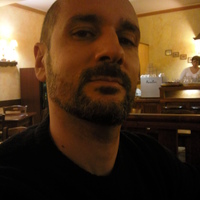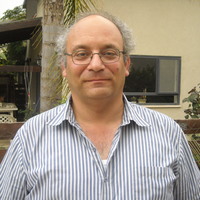Papers by Christopher M Jones
I argue, pace Thiessen, that the boundaries of restored Israel in Ezra 1–6 are porous: the texts ... more I argue, pace Thiessen, that the boundaries of restored Israel in Ezra 1–6 are porous: the texts that establish the community’s exclusivism do so only provisionally, in place of a working temple cult. This is shown especially in Ezra 2:61–63, where priests who cannot find written proof of their ancestry must wait for Urim and Thummim. Thus, during the Passover in Ezra 6:19–21, the cult (rather than written documents) ultimately establishes boundaries, permitting the inclusion of outsiders.
In Understanding Bible by Design, by G. Brooke Lester with Jane S. Webster and Christopher M. Jon... more In Understanding Bible by Design, by G. Brooke Lester with Jane S. Webster and Christopher M. Jones. I describe using backward design in my first semester as a full-time faculty member teaching outside of my core discipline.

I draw on spatial theory, and particularly Edward Casey’s concept of “implacement,” to investigat... more I draw on spatial theory, and particularly Edward Casey’s concept of “implacement,” to investigate the rhetoric of Isaiah 60. Implacement means being concretely placed. I argue that Isaiah 60 uses the motifs of light and tribute to “implace” Jerusalem for its audience. It uses these motifs to acknowledge Jerusalem’s degraded state in the early fifth century and to imagine the means by which the city’s restoration will occur. Drawing on Wells’ work on inner-Isaianic allusion and Strawn’s argument that Isa 60 incorporates and subverts Persian iconography, I argue that, in Isa 60, the motif of light implaces Jerusalem by marking it out as the cosmic center and by drawing the nations to the city. The motif of tribute, meanwhile, actually transfers the implacedness of the nations to Jerusalem. The rhetoric of the text encourages its audience to re-imagine the Jerusalem of their experience in its restored and glorified future state.
Teaching Documents by Christopher M Jones
My syllabus for a 10-week introduction to the Bible, built around Michael Satlow's How the Bible ... more My syllabus for a 10-week introduction to the Bible, built around Michael Satlow's How the Bible Became Holy.
Phone: (608) 234-1952 (not after 10 p.m.) Office Hours: 2:45 -3:30 p.m., MWF, at Java Joint
5% each (25% total) • Ritual expert (including papers): 10% • Observations on others' rituals: 5%... more 5% each (25% total) • Ritual expert (including papers): 10% • Observations on others' rituals: 5% each (10% total) • Ritual analysis papers (due 2/25; 4/22; 5/10): 10% each (30% total) • Focused reading responses: 15% • Participation in class: 10%
preferred) Cell: (608) 234-1952 (only for special circumstances; never after 10 p.m.) Twitter: #R... more preferred) Cell: (608) 234-1952 (only for special circumstances; never after 10 p.m.) Twitter: #REL332UW Office hours: Thursday, Noon -2 p.m. Location: Espresso Royale, 650 State Street (all meetings here unless otherwise specified) Classlist
preferred) Cell: (608) 234-1952 (only for special circumstances) Office hours: Monday 1-2 p.m.; W... more preferred) Cell: (608) 234-1952 (only for special circumstances) Office hours: Monday 1-2 p.m.; Wednesday 9-10 a.m. Location: _________________ Classlist











Uploads
Papers by Christopher M Jones
Teaching Documents by Christopher M Jones